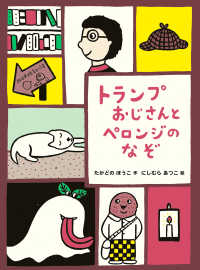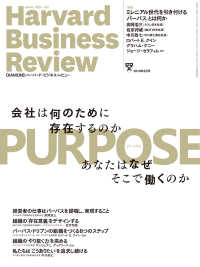- ホーム
- > 洋書
- > 英文書
- > Architecture
Full Description
The compelling story of the significant relationship between communism and modern architecture in postwar France
The massive reshaping of French cities that took place between 1958 and 1981 is commonly regarded as a unique episode in which modernist ideals were tested on an unprecedented scale. Yet the history of postwar French modernism has never fully accounted for the influence of one of architecture's most important institutional patrons, the French Communist Party (PCF). Drawing political theory and architectural history into conversation, Vanessa Grossman probes the shifting but enduring alliance between modern architecture and the PCF in the aftermath of the political crisis of 1958, prompted by the Algerian War of Independence and Charles de Gaulle's rise to power.
Focusing on key episodes, Grossman discusses the work of Renée Gailhoustet (a rare female architect of her generation), Jean Renaudie, and members of the Atelier d'urbanisme et d'architecture (AUA), in collaboration with architectural elders such as Jean Prouvé and Oscar Niemeyer, who self-exiled to France, and in relation to contemporary Marxist thinkers such as philosophers Louis Althusser and Henri Lefebvre. Grossman exposes how communist politics and architectural modernism were mutually reinforcing ideologies that circulated in France across national and international networks of architects, urban planners, civil servants, intellectuals, activists, and politicians. Offering a new understanding of the postwar realization that architecture, particularly housing, could be employed as a political tool, this highly original book reveals the meaningful dialogue between French communism and architectural modernism.







